Ancient Nubian Monuments of Abu Simbel
Abu Simbel is a stunning group of ancient Nubian monuments and buildings that hold significant cultural and historical value. Located in southern Egypt, this site is recognized by UNESCO for its importance. It includes not just the famous temples of Abu Simbel but also the beautiful Philae temple and other nearby sites in the Nubian region. These remarkable monuments tell the story of Egypt’s rich history and heritage.
Table of Contents
Where is the location of Abu Simbel?
Abu Simbel is a famous site in southern Egypt, near the border with Sudan. It is located on the western bank of Lake Nasser, southwest of the city of Aswan. This location is within the Nubian region, has a rich history and has been home to many different cultures and civilizations over the years.
Inscription of Abu Simbel
The UNESCO “Inscription of Abu Simbel” highlights the importance of the Abu Simbel temples as part of a unique World Heritage Site called “Nubian Monuments from Abu Simbel to Philae.” This designation was recognized in 1979 and includes critical historic buildings stretching from Abu Simbel to Philae in southern Egypt. These sites are acknowledged for their cultural and historical value, and the UNESCO designation helps to honor and protect the temples at Abu Simbel, Philae, and other famous sites in the Nubian region.
What is the history of Abu Simbel?

Abu Simbel is well-known for its incredible temples, which were created during the time of Pharaoh Ramses II in the 13th century BCE. The site includes two prominent temples cut into rock: one is dedicated to Ramses II himself, and the other honors his queen, Nefertari. These temples are famous for their huge statues and beautiful carvings. A remarkable feat of engineering took place in the 1960s when the entire site was moved to a higher location to protect it from flooding caused by Lake Nasser.
The Nubian Monuments, which stretch from Abu Simbel to Philae, are located in the Aswan region of Egypt. This collection includes ten important sites and covers an area of about 374.48 hectares. One notable example is the temples at Abu Simbel, which were carved out of stone by the ancient Egyptian King Ramses II. Abu Simbel, Amada, Wadi Sebua, Kalabsha, and Philae (also known as the Island of Agilkia) are the last five items that highlight the ancient objects discovered in the Aswan area. Each of those places offers a glimpse into the region’s rich history and culture.
What is the history of the Nubian People?
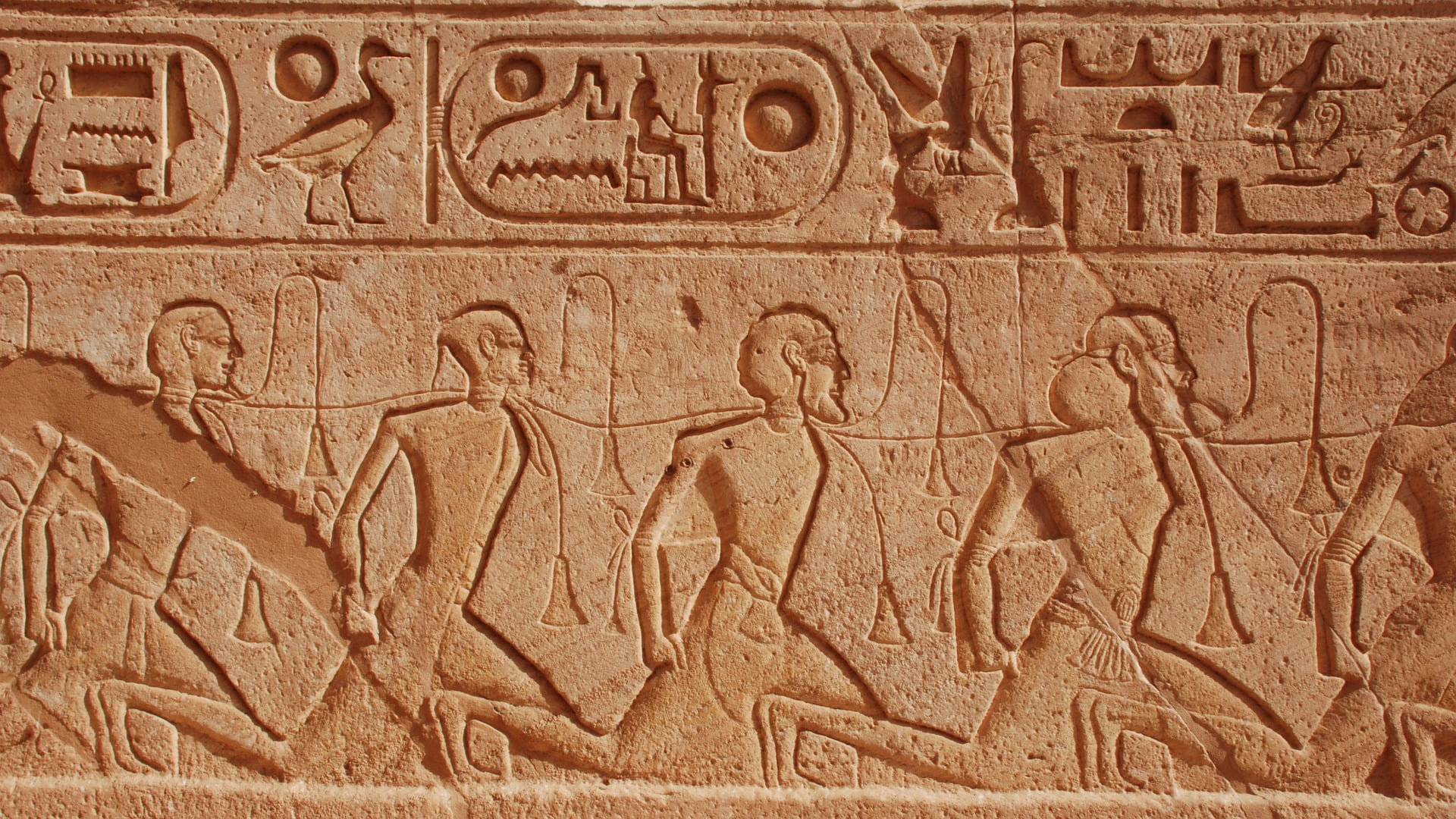
Throughout important times in Egyptian history, the neighboring region of Nubia often fell under the influence of the Egyptian Kingdom. Over time, Nubia became more closely connected to Egypt, eventually being treated like a colony. As a result, the wealth and resources from Nubia were sent to the city of Aswan in Egypt. The stretch of the Nile from Aswan in the north to the border with Sudan in the south is rich in archaeological wonders.
This region is home to a variety of ancient monuments, including temples built during the New Kingdom and later by the Ptolemaic and Roman empires. You can also find some of the earliest sites from Coptic Christian communities and old villages. These sites showcase the diverse cultural heritage of the Nubian people and the many different influences that have shaped their history over the years.
Where did Abu Simbel move to?
From 1960 to 1980, several ancient Abu Simbel temples were moved to new locations as part of a global effort organized by UNESCO. This relocation was necessary to protect the temples from being flooded by the increasing waters of the Nile River and Lake Nasser. Notable temples, like the famous ones at Abu Simbel and Philae, were carefully moved to new locations to ensure their preservation.
Over a thousand large blocks, each weighing about 30 tons, were carefully labeled and moved to storage. They were then put back together on a specially constructed artificial cliff 64 meters high and 180 meters from the original location. Abu Simbel was officially opened in its new spot on September 22, 1968. The Philae monuments, which were the last to be moved to safety, were relocated to a higher area on Agilkia Island between 1972 and 1979.
A total of 22 critical monuments and sites were successfully protected thanks to the efforts of 40 technical teams from five continents. The entire project cost around $80 million, with half of that amount generously contributed by about 50 different countries.
This effort shows how much people care about protecting these incredible historical sites. The recognition from UNESCO highlights how important these temples are in history and why they are celebrated as World Heritage Sites across the globe.
What is the remarkable architecture of Abu Simble Temple?
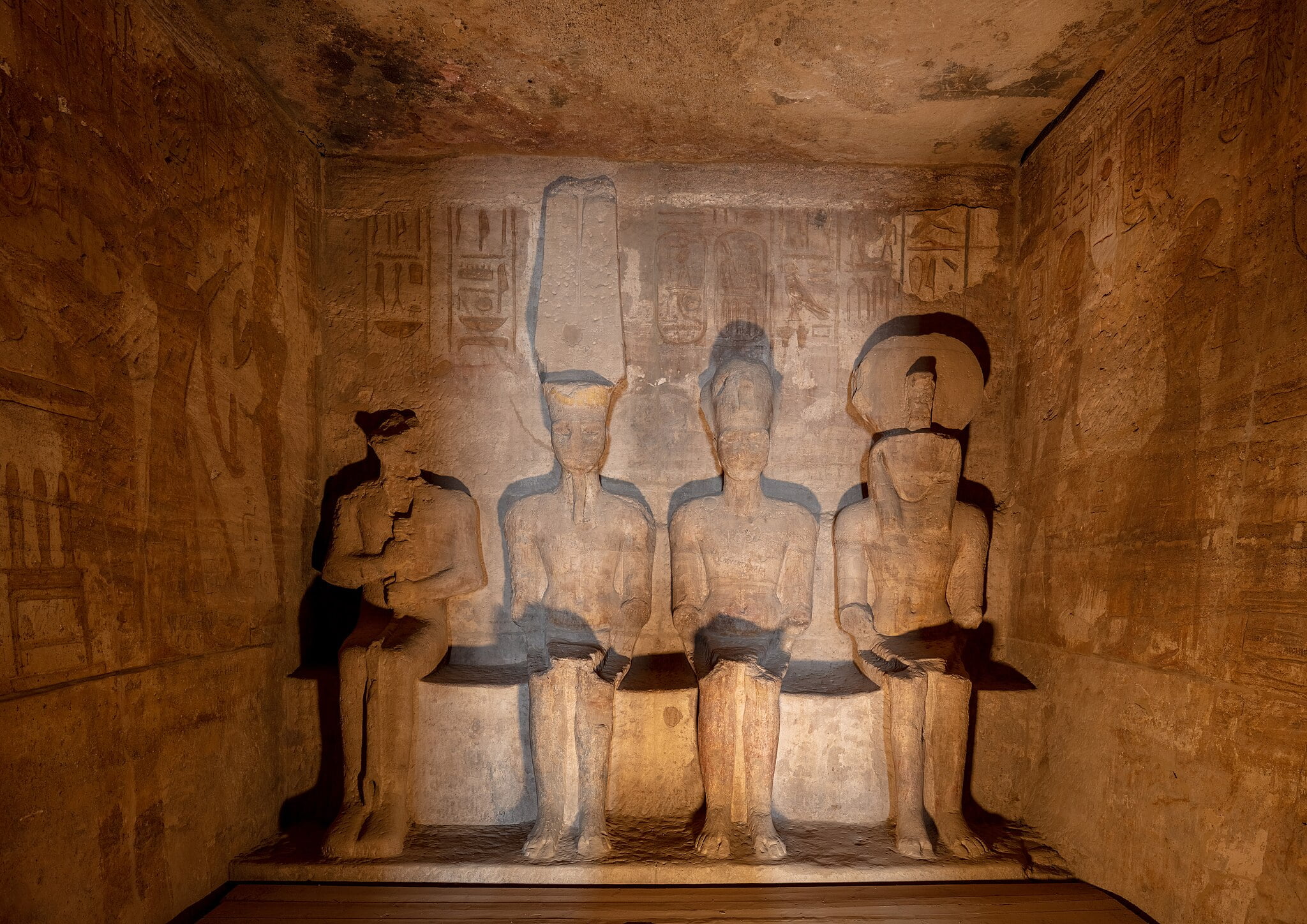
The remarkable architecture of Abu Simbel Temple was built by Pharaoh Ramses II in the 13th century BCE. Its stunning design includes a grand entrance with four giant statues of the pharaoh, each one towering about 21 meters high. The site is known for its impressive buildings, including the Great Temple at Abu Simbel, which is cut directly into a single rock cliff. This remarkable structure is designed in such a way that sunlight shines into its deepest room two times each year, specifically during the equinoxes.
Inside, intricate carvings and symbols tell the story of Ramses’s victories in battle and his religious gifts. The whole area was moved in the 1960s to prevent it from being submerged by the waters of Lake Nasser. This remarkable effort highlights both its importance in history and the extraordinary engineering skills of modern times.
What is the meaning of Equinoxes?
“Equinoxes” refers to two special times each year when day and night are almost equal in length. These occur around March 21 and September 23. During these dates, sunlight shines into the deepest part of the temple and illuminates the statues of the gods, including the statue of Ramses II. This fantastic design showcases the incredible skills of the ancient Egyptians, who not only built impressive structures but also had a deep understanding of astronomy and how they influenced their religious ceremonies.
Why is Temple Isis important?
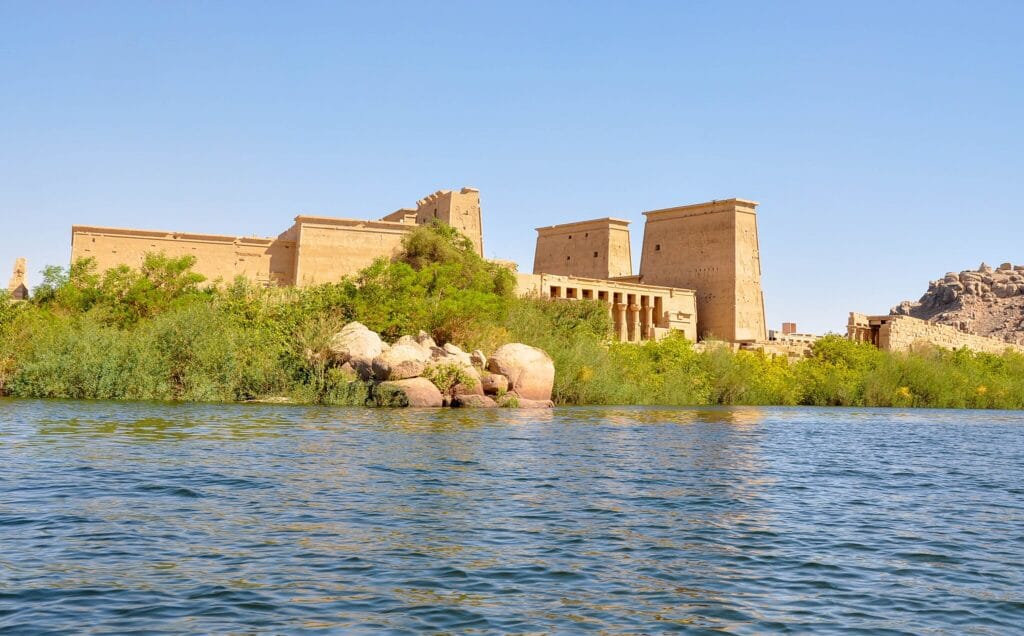
The magnificent Ptolemaic sanctuary of the goddess Isis, known for its impressive temples and buildings since ancient Greek and Roman times, was located at Philae, near the first waterfall of the Nile River. The worship of Isis was an important part of ancient Egyptian religion. It continued to thrive until the 9th century CE, making it one of the last strongholds of these ancient beliefs.
Above the first cataract(Waterfall), there is a critical site called the Grand Sanctuary of the Goddess Isis at Philae. This site was built during the Ptolemaic period and has been famous since ancient times for its temples. These temples are named after the last Pharaohs and Roman emperors, including Hadrian. Trajan’s kiosk is one of the most well-known structures, celebrated for its beauty and reputation.
What is the history of the Philae Temple? What is the Philae Temple famous for?

The Temple of Isis, often known as the Philae Temple, is an important ancient site located on Philae Island in the south of Egypt. This temple was committed to the goddess Isis, who played a key role in the beliefs of ancient Egyptians. It’s a beautiful and historic place that reflects the rich culture and spirituality of that time. Philae’s temple complex is known for its beautiful and well-cared-for buildings. This site highlights the incredible craftsmanship and deep spiritual commitment of the ancient Egyptians.
After the Aswan High Dam was constructed, the beautiful Philae Temple complex was relocated to the nearby island of Agilkia to prevent it from flooding. Today, the Philae Temple is an important historical site and cultural treasure, attracting visitors from all over the world.
What is the history of Aswan City? What is the Aswan City famous for?
Aswan, an ancient border town in Egypt, was situated just north of a natural barrier called the first cataract(Waterfall). This location was very important because it allowed the Egyptians to manage activities in the areas to the south, including trade and military operations. Over the years, the Egyptians organized many trips to gain control over the region known as Nubia, and this effort dates back to prehistoric times.
Aswan is home to many significant landmarks that highlight the city’s historical significance as a hub for trade, military activity, and everyday life. Throughout the Old and Middle Kingdoms of ancient Egypt, officials managing Nubian affairs built beautifully decorated tombs in the Qubbet el Hawa Mountain area. At the same time, many interesting discoveries have also been made in the nearby town of Elephantine, showcasing the region’s rich history.
What are the famous places and temples in Abu Simbel?
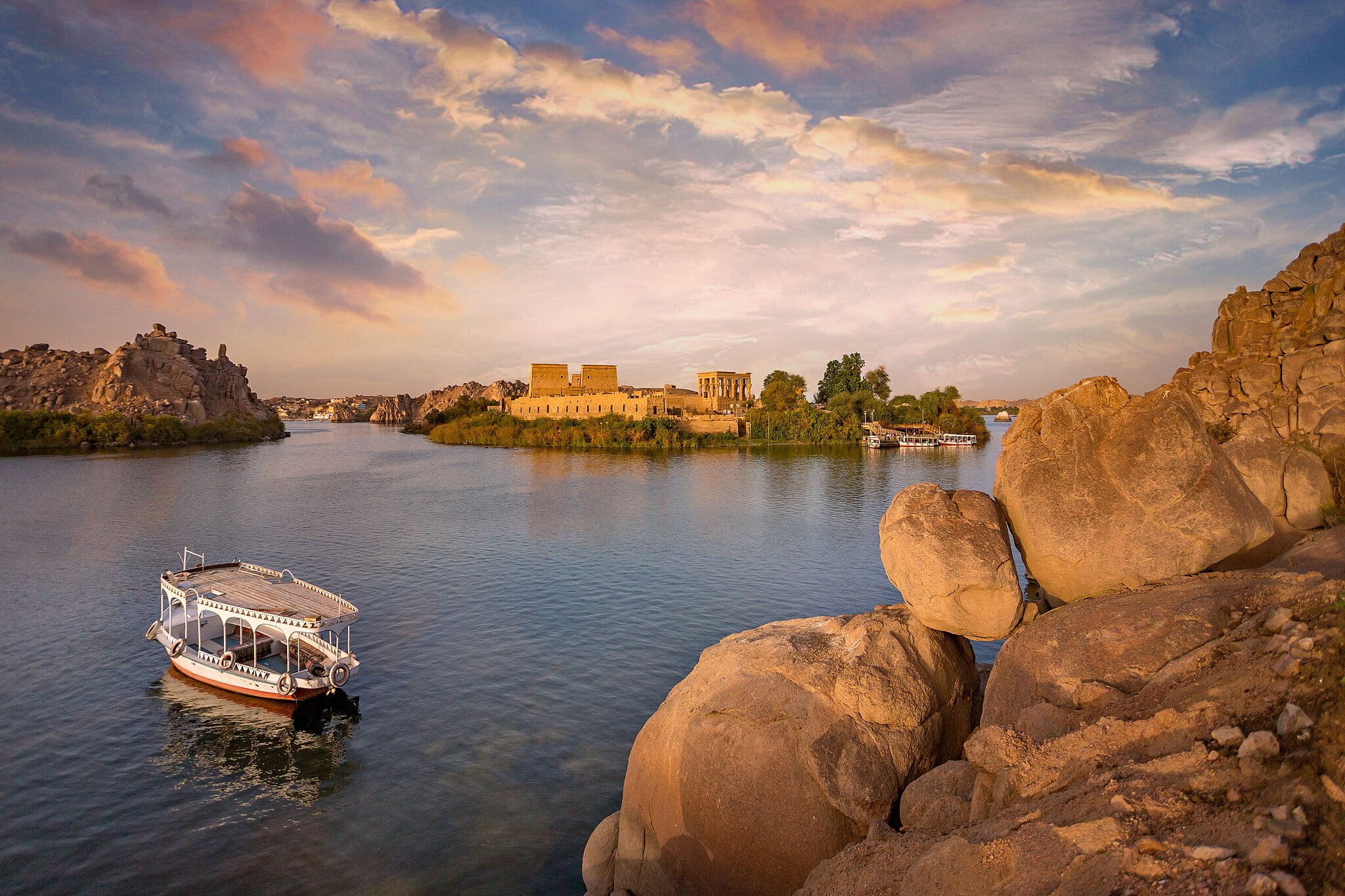
Besides the famous Abu Simbel and Philae temples, this area also features several other significant sites. These include the Amada temples, which were built by ancient rulers Tuthmosis III and Amenophis II. There are also features of the Derr temples at Amada, the temples of Wadi Sebua, Dakka, and Maharraqa at Wadi Sebua. You can also visit the ancient tombs from the Old and Middle Kingdoms, the ruins of the island of Elephantine, the stone quarries and impressive monuments, the Monastery of St. Simeon, and the Islamic Cemetery.
The stone quarries, where you can still see an unfinished giant pillar called an obelisk, give us a glimpse into how ancient Egyptians worked with stone. On the west bank, you’ll find the monastery of St. Simeon, which has well-preserved ruins. It’s one of the largest monasteries in Egypt, making it an interesting place to explore.
Additionally, the Talmis temple has been moved to a place called Kalabsha, and there are notable structures like the Kartassi kiosk and the Beit el Wali temple. These sites together highlight the rich history and culture of ancient Egypt. Those properties are home to several impressive monuments that are widely recognized as remarkable examples of human creativity.
Why should we preserve Abu Simbel significantly for us and future generations?
Preserving Abu Simbel’s safety is crucial for cultural and historical reasons. That ancient temple complex was built a long time ago during the time of Pharaoh Ramses II. It highlights incredible engineering and artistry, showing the wealth and power of ancient Egypt. Abu Simbel stands as a symbol of human creativity and spirituality, helping us understand the beliefs and practices of people from the past.
Abu Simbel is a vital site recognized by UNESCO, which means it is valued for its cultural significance. Preserving places like Abu Simbel is essential because it helps keep our history alive for future generations. By protecting these sites, we can continue to learn about and appreciate our past, helping us feel connected to our roots and each other.
Why should you visit Abu Simbel as a visitor?
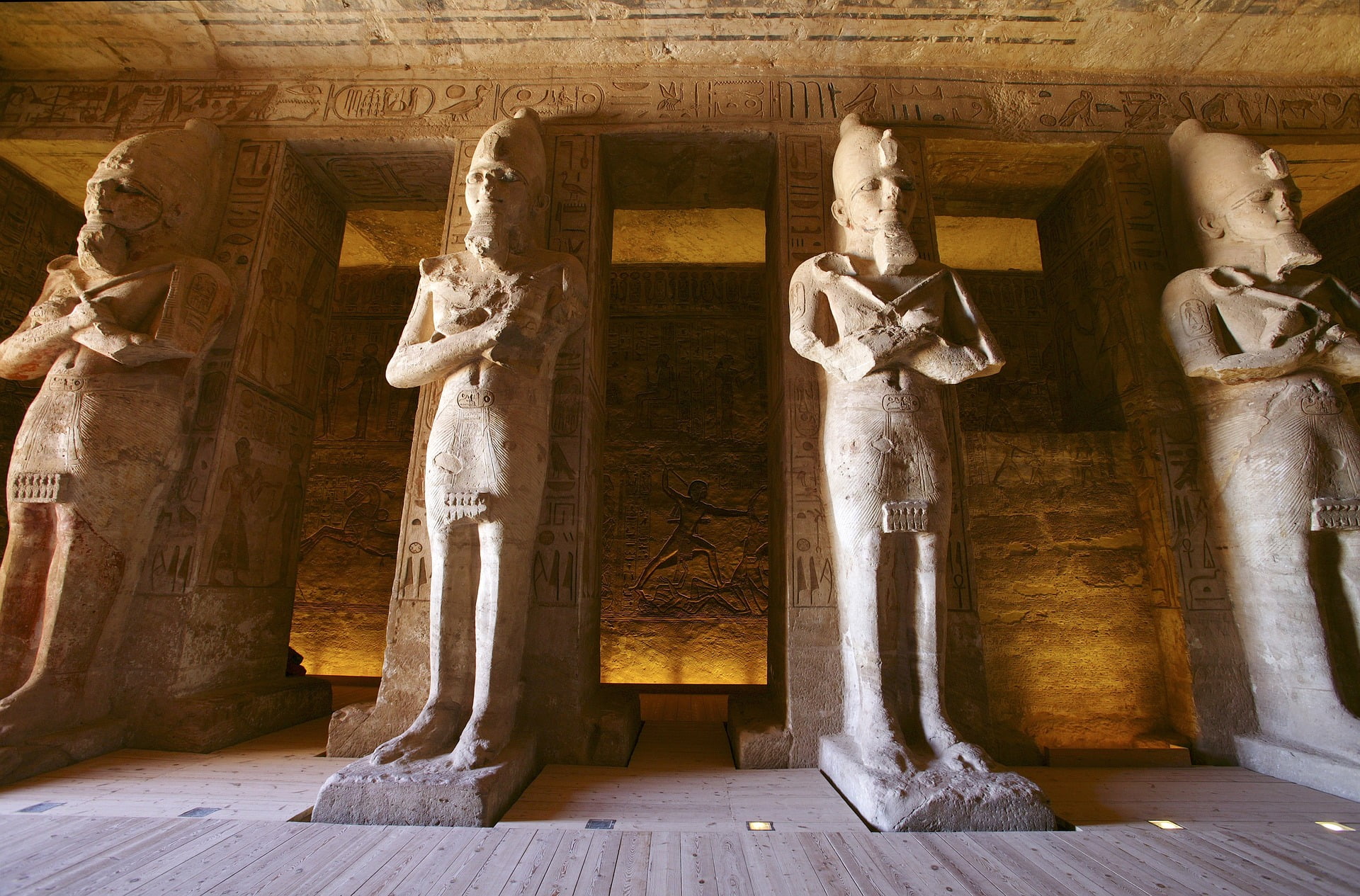
Abu Simbel is a fantastic place to visit because of its beautiful temples that highlight the incredible art and architecture of ancient Egypt. The large temples dedicated to Ramses II and his wife, Queen Nefertari, are not just prominent; they have a fascinating history that shows the greatness of the ancient kings and queens. The location by Lake Nasser makes it even more stunning, significantly when the sun rises or sets, creating a magical atmosphere.
The story behind the relocation of the temples to prevent them from being submerged during the building of the Aswan High Dam is genuinely captivating for anyone interested in history. Abu Simbel provides a fascinating look into Egypt’s past and is a must-see for anyone visiting the country.
What are the best ways to experience the beauty and grandeur of the Abu Simbel temples?
Embark on a journey to one of Egypt’s most remarkable treasures—Abu Simbel! Discover the breathtaking temples masterfully relocated to preserve history for future generations. Involve yourself in the captivating stories of ancient Egypt and witness the grandeur of architecture that has stood the test of time. Don’t miss this opportunity to explore a site that is also a significant piece of history. Plan your trip to Abu Simbel today and create unforgettable memories!
When you’re planning your adventure, enhance your travel experience by using trusted websites like GetYourGuide and Trip.com! These platforms offer a variety of enjoyable tours, activities, and accommodation options to suit every traveler’s needs.
- GetYourGuide offers a wide variety of unforgettable travel experiences. You can choose from tickets to Popular Attractions, Transportation Options, City Passes, Guided Tours, Hop-on Hop-off Bus Services, Water Activities, Day trips, and Trips that last several days in many locations around the world.
- Trip.com makes it easy to combine Flights and Hotels, Trains, Car Rentals, Airport Transfers and Attractions & Tours to create the perfect travel package tailored just for you.
Start your journey with our reliable travel partners and unlock the best of Abu Simbel and beyond!
Disclaimer
In this post, affiliate links are included and those links are associated with well-known travel companies such as GetYourGuide and Trip.com. If you choose to purchase or book a service using those links, we may earn a commission at no additional cost to you. We focus on recommending products and services that are helpful to you and we appreciate your support!
Conclusion
We hope you find this information helpful for your next trip. If you want to learn more, check out our other travel blog posts. We cover many topics, including amazing places to visit and helpful travel tips. Whether you’re looking for hidden gems, new cultures, or helpful advice, there’s something for everyone.
Additionally, If you enjoyed the information we shared, don’t forget to explore our other travel product reviews to make your journey even better! Please take a moment to look through our previous posts and let your sense of adventure guide you on your next journey! We wish you happy travels and look forward to sharing more with you in our next blog post!




